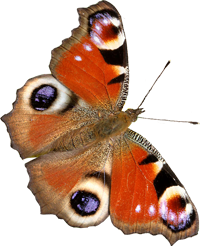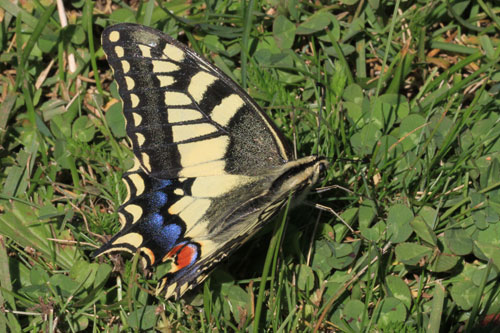
Montes Universales, Spain, July 2011
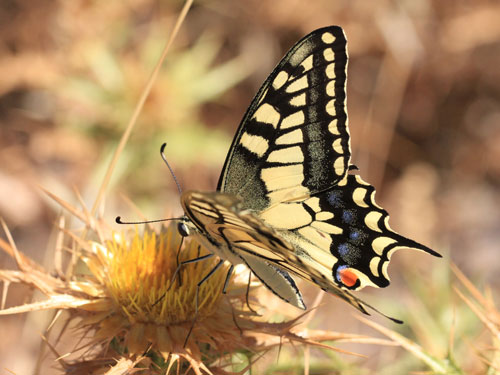
Corsica, France, July 2012
Field notes and information
Widespread and often encountered in diverse habitats during most warm months of the year at all but the highest altitudes.
Identification & Similar species: Its large size and bright yellow colour mean it is can only be confused with the other Swallowtails, Papilio. The present species is by far the most widespread and usually most commonly encountered. All the others are very local and of restricted range, but they may be common where found.
Distribution across most of Europe in a number of broods, except in the UK (see "Variation" below).
Habitat & Behaviour: Habitats are diverse but usually open places including gardens, fields, roadsides as well as natural environments. It ranges widely and is often found singly well away from likely breeding grounds. The larvae use many species of the Umbelliferae (Carrots) and Rutaceae (Rues). Males frequently hill-top.
Variation: britannicus in the UK, unusually for this species has a very restricted range and habitat. Only known from the Norfolk Broads, these specimens have narrower forewings. Speculation is that this prevents individuals migrating away from the restricted breeding grounds in a region where they are unlikely to find other suitable habitat.
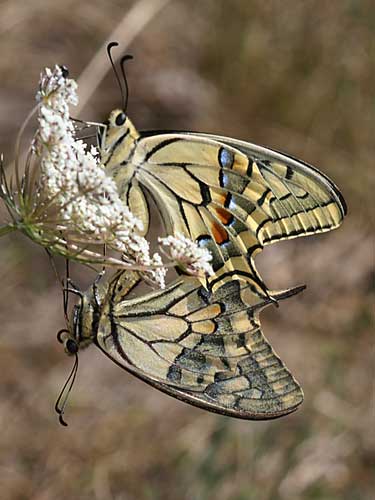
Var, France, July 2009
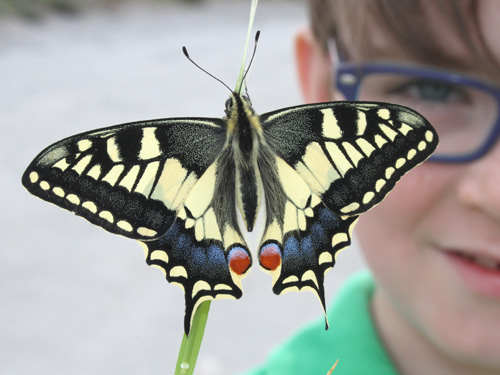
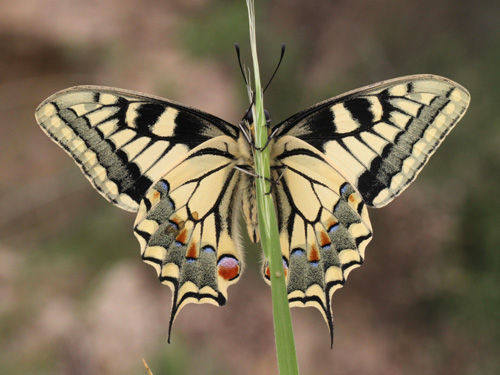
Crete, Greece, April 2014
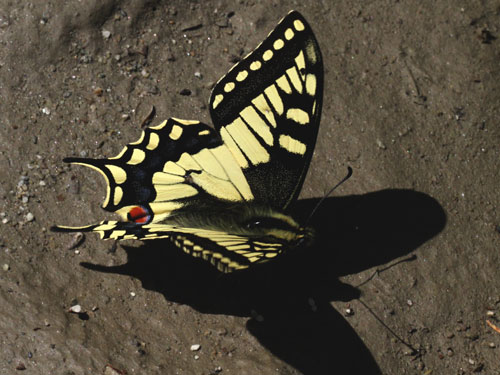
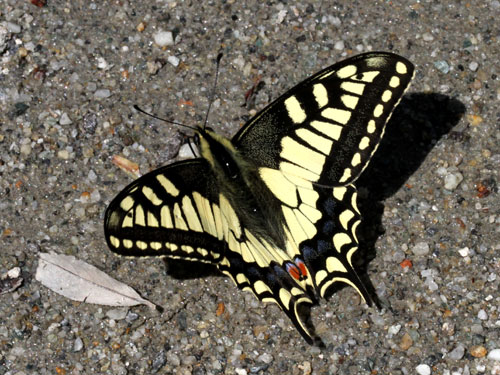
Valais, Switzerland, May 2013
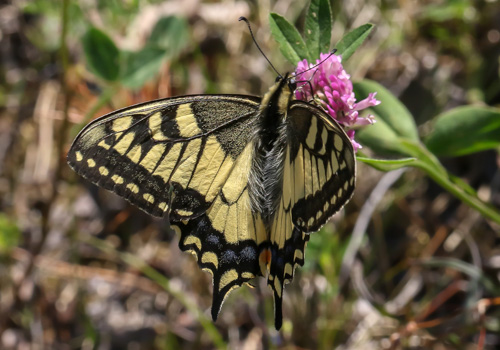
N Sweden, July 2022
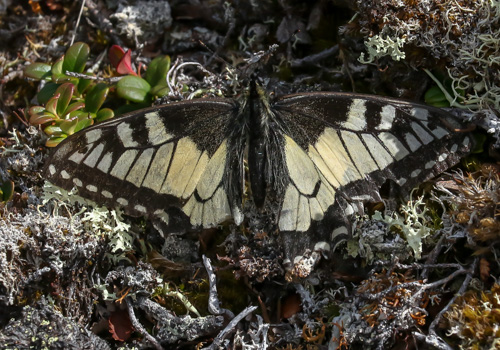
N Norway, July 2022
Hill topping way north of the Arctic Circle.
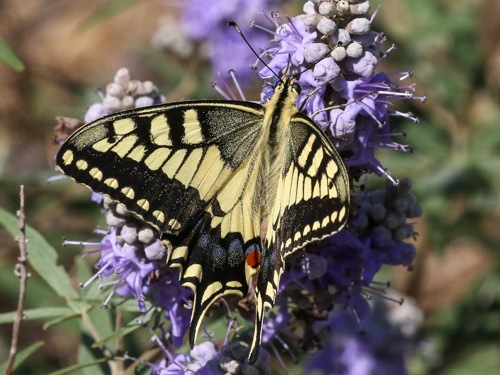
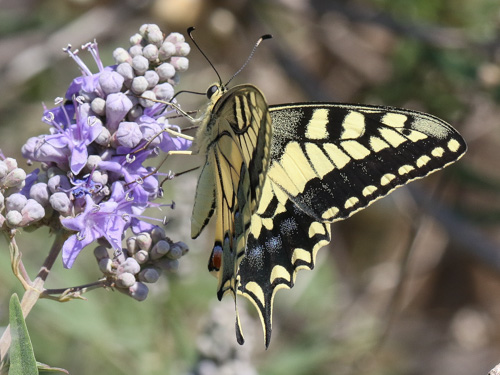
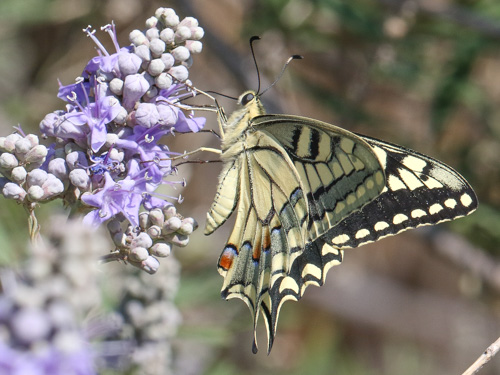
Crete, Greece, June 2018
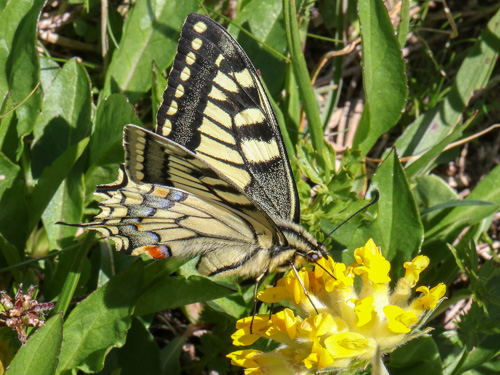
Valais, Switzerland, July 2018
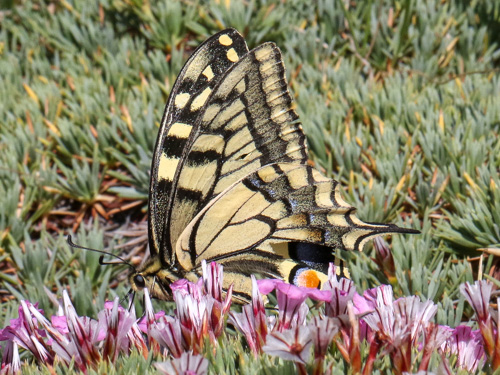
Peloppensos, Greece, July 2018
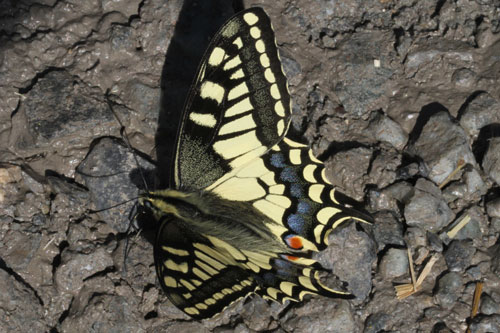
Valais, Switzerland, April 2011
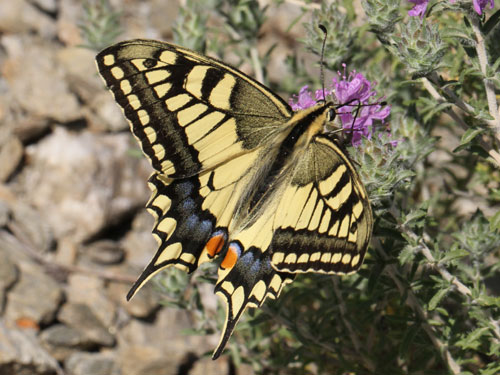
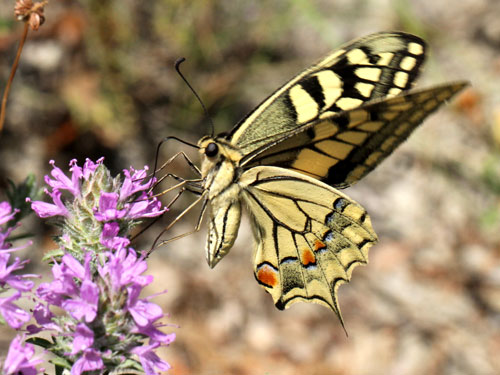
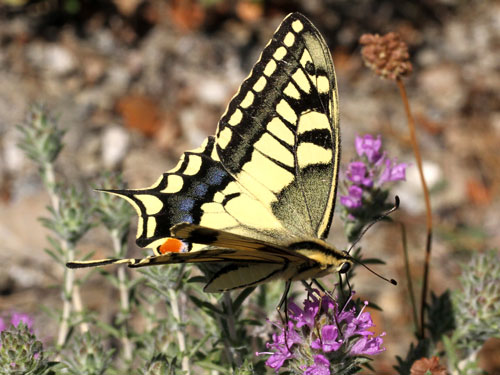
Peloppensos, Greece, June 2013
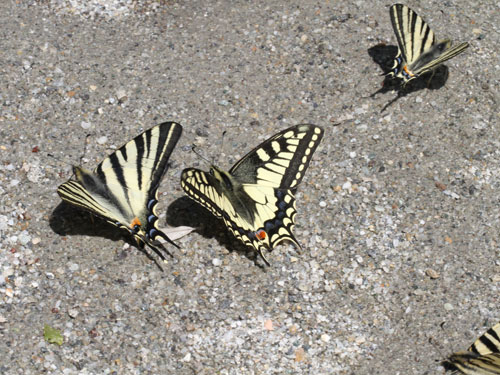
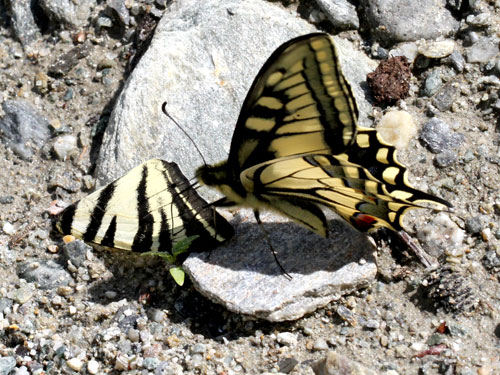
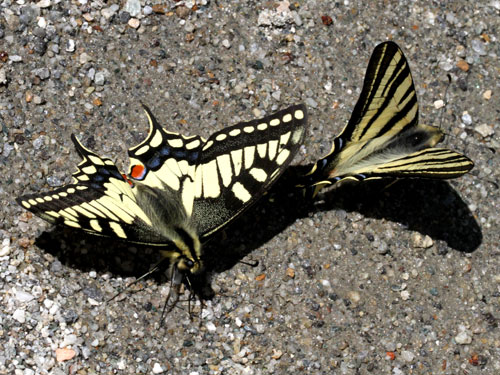
Valais, Switzerland, May 2013
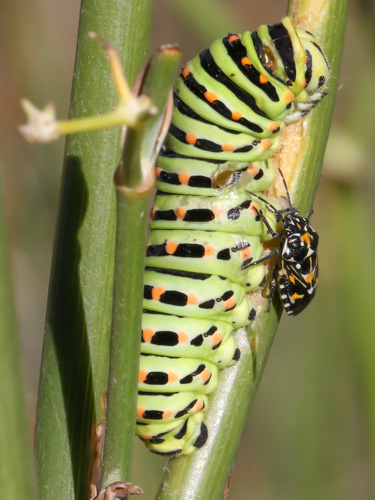
Rhodes, Greece October 2018
The larva appears to be injured. I don't know if this bug is responsible somehow.
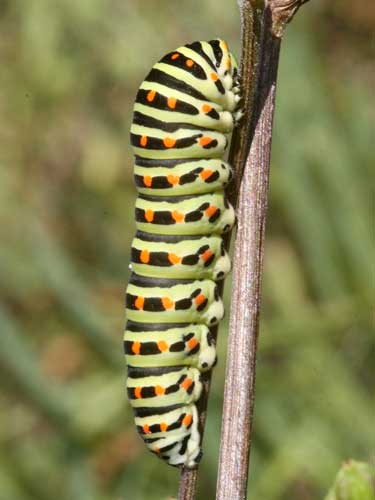
Valais, Switzerland, September 2009
